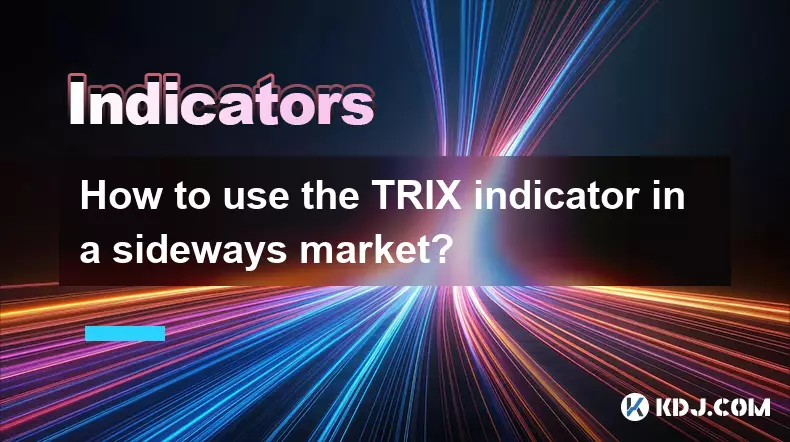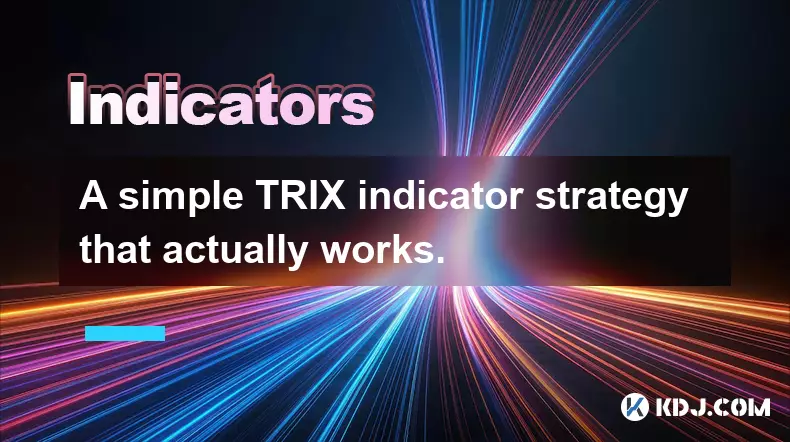-
 bitcoin
bitcoin $106680.127705 USD
0.67% -
 ethereum
ethereum $3615.722480 USD
-0.65% -
 tether
tether $0.999925 USD
-0.04% -
 xrp
xrp $2.550072 USD
5.91% -
 bnb
bnb $1002.572269 USD
-0.90% -
 solana
solana $168.746669 USD
1.08% -
 usd-coin
usd-coin $0.999832 USD
-0.03% -
 tron
tron $0.297244 USD
1.97% -
 dogecoin
dogecoin $0.182965 USD
0.71% -
 cardano
cardano $0.600432 USD
2.56% -
 hyperliquid
hyperliquid $41.439691 USD
-1.57% -
 chainlink
chainlink $16.548399 USD
2.40% -
 bitcoin-cash
bitcoin-cash $524.993680 USD
3.45% -
 stellar
stellar $0.302259 USD
4.10% -
 zcash
zcash $539.994871 USD
-16.31%
How to combine BOLL bands with Fibonacci retracement?
Combining Bollinger Bands and Fibonacci retracement helps crypto traders identify high-probability reversal zones, especially when price touches a band near a key Fibonacci level.
Nov 07, 2025 at 07:19 am

Understanding BOLL Bands and Fibonacci Retracement in Crypto Trading
1. Bollinger Bands (BOLL) are a technical analysis tool created by John Bollinger, consisting of a middle band being an SMA (Simple Moving Average), and two outer bands that represent standard deviations away from the mean. In the volatile environment of cryptocurrency trading, these bands dynamically expand and contract based on market volatility. When price approaches the upper band, it may signal overbought conditions; nearing the lower band could suggest oversold levels.
2. Fibonacci retracement levels are horizontal lines that indicate potential support and resistance zones derived from key ratios—23.6%, 38.2%, 50%, 61.8%, and 78.6%. These levels originate from the Fibonacci sequence and are widely used by traders to anticipate price reversals. In crypto markets, where sentiment drives sharp movements, these levels often act as psychological barriers where buyers or sellers step in.
3. Combining both tools allows traders to identify high-probability entry and exit points. The convergence of a BOLL band touch with a Fibonacci level increases the reliability of a reversal signal. For instance, if Bitcoin’s price hits the lower BOLL band exactly at the 61.8% Fibonacci retracement level during a pullback, this dual confirmation can strengthen the case for a bounce.
4. Traders often use a 20-period SMA with two standard deviations for the BOLL setup, while applying Fibonacci from a recent swing high to swing low in a downtrend—or vice versa in an uptrend. This alignment helps visualize how price interacts with both volatility boundaries and proportional retracements.
5. It's essential to note that neither indicator works flawlessly in isolation. The integration reduces false signals, especially in sideways or choppy markets common in altcoin trading. Confirmation from volume spikes or candlestick patterns near confluence zones adds further validity.
Practical Application in Cryptocurrency Markets
1. Identify a clear trend using higher timeframes such as the 4-hour or daily chart. Suppose Ethereum has risen from $2,000 to $3,500 and begins correcting downward. Draw Fibonacci retracement from the swing low to the swing high to map out potential support levels.
2. Overlay BOLL bands on the same chart. As ETH declines, observe whether the price touches or breaches the lower band. If this occurs near the 61.8% retracement level ($2,420), it forms a confluence zone worth monitoring closely.
3. Wait for additional confirmation before entering a trade. A bullish engulfing candle or a hammer pattern forming at this intersection enhances the probability of a successful long position. Volume should ideally increase on the reversal bar.
4. Set stop-loss orders just below the 78.6% Fibonacci level or beneath the lower BOLL band to manage risk. Take-profit targets can be placed at the middle BOLL band (20 SMA) or the 38.2% retracement level, depending on momentum.
5. In ranging markets, this strategy works well when price oscillates between the upper and lower bands. If the price rebounds from the lower band at a major Fibonacci support (e.g., 50%), and later meets resistance at the upper band aligned with a Fibonacci extension, short opportunities arise.
Managing False Signals and Market Noise
1. Cryptocurrencies frequently experience pump-and-dump cycles, leading to rapid BOLL band expansions that don’t align with Fibonacci levels. During such events, price may pierce the upper band far beyond the 100% extension, creating misleading overbought readings. Relying solely on band breaches without considering retracement context increases whipsaw risk.
2. Use multiple timeframes to filter noise. For example, a daily chart may show price respecting a 61.8% Fibonacci level combined with the lower BOLL band, while the hourly chart displays chaotic fluctuations. Trading decisions should prioritize the higher timeframe’s confluence.
3. Avoid trading against strong trends. If Bitcoin is in a parabolic rise, expecting reversals at Fibonacci levels coinciding with the upper BOLL band might result in early exits. Instead, consider these zones as areas to add to existing long positions on pullbacks.
4. Adjust BOLL settings cautiously. While the default 20-period SMA is standard, some traders modify deviation values during extreme volatility. However, altering parameters too frequently undermines consistency. Stick to proven configurations unless backtesting supports changes.
5. Always combine with volume analysis and momentum indicators like RSI or MACD to validate signals generated by BOLL-Fibonacci intersections. A divergence on RSI when price reaches a confluence zone strengthens reversal expectations.
Frequently Asked Questions
What timeframes work best when combining BOLL and Fibonacci in crypto trading? The 4-hour and daily charts provide reliable setups due to reduced noise. Shorter timeframes like 15-minute or 1-hour are prone to false breakouts, making them less ideal for primary decision-making.
Can this strategy be automated using bots or scripts? Yes, many algorithmic trading platforms allow coding logic that detects when price touches a BOLL band within a defined range of a Fibonacci level. Custom alerts or execution rules can be programmed accordingly.
Do BOLL bands and Fibonacci work equally well across all cryptocurrencies? They perform better on large-cap coins like BTC and ETH due to higher liquidity and more predictable price behavior. Low-cap altcoins often exhibit erratic moves that invalidate technical structures temporarily.
How do you handle situations where price skips a Fibonacci level and goes straight to the next one? This often happens during high-impact news or whale activity. In such cases, reassess the structure by redrawing Fibonacci from updated swing points and check alignment with BOLL bands on refreshed ranges.
Disclaimer:info@kdj.com
The information provided is not trading advice. kdj.com does not assume any responsibility for any investments made based on the information provided in this article. Cryptocurrencies are highly volatile and it is highly recommended that you invest with caution after thorough research!
If you believe that the content used on this website infringes your copyright, please contact us immediately (info@kdj.com) and we will delete it promptly.
- CFTC, Crypto, and Congress: Navigating the Murky Waters of Market Oversight
- 2025-11-11 10:55:01
- XRP: Is This Crypto's Best-Performing Asset?
- 2025-11-11 06:45:01
- Navigating the Crypto Maze: Economic Schedules, Treasury Auctions, and the Bitcoin Beacon
- 2025-11-11 07:40:01
- Exodus & Grateful: Stablecoin Payments Take Center Stage
- 2025-11-11 10:10:01
- AVAX & OP: Price Prediction, Open Interest, and Recovery Gains - What's Next?
- 2025-11-11 06:50:02
- HUGS Presale: Milk Mocha's Crypto Rush is On!
- 2025-11-11 10:10:01
Related knowledge

What's the best way to learn the TRIX indicator?
Nov 10,2025 at 12:39pm
Understanding the Basics of the TRIX Indicator1. The TRIX (Triple Exponential Average) indicator is a momentum oscillator designed to filter out short...

How do professional traders use the TRIX indicator?
Nov 06,2025 at 04:40pm
Understanding the TRIX Indicator in Crypto TradingThe TRIX (Triple Exponential Average) indicator is a momentum oscillator used by professional trader...

Can I use the TRIX indicator on my mobile trading app?
Nov 07,2025 at 07:40pm
The TRIX indicator, a momentum oscillator designed to filter out short-term fluctuations and highlight long-term trends, has become increasingly popul...

How to use the TRIX indicator in a sideways market?
Nov 10,2025 at 03:00pm
Bitcoin’s Role in Decentralized Finance Evolution1. Bitcoin remains the cornerstone of decentralized finance, serving as both a store of value and a b...

How to code a simple TRIX indicator script in Pine Script?
Nov 07,2025 at 06:20am
How to Code a Simple TRIX Indicator in Pine Script The TRIX (Triple Exponential Moving Average) indicator is widely used in cryptocurrency trading to ...

A simple TRIX indicator strategy that actually works.
Nov 08,2025 at 05:39pm
Understanding the TRIX Indicator in Crypto Trading1. The TRIX (Triple Exponential Average) indicator is a momentum oscillator designed to filter out s...

What's the best way to learn the TRIX indicator?
Nov 10,2025 at 12:39pm
Understanding the Basics of the TRIX Indicator1. The TRIX (Triple Exponential Average) indicator is a momentum oscillator designed to filter out short...

How do professional traders use the TRIX indicator?
Nov 06,2025 at 04:40pm
Understanding the TRIX Indicator in Crypto TradingThe TRIX (Triple Exponential Average) indicator is a momentum oscillator used by professional trader...

Can I use the TRIX indicator on my mobile trading app?
Nov 07,2025 at 07:40pm
The TRIX indicator, a momentum oscillator designed to filter out short-term fluctuations and highlight long-term trends, has become increasingly popul...

How to use the TRIX indicator in a sideways market?
Nov 10,2025 at 03:00pm
Bitcoin’s Role in Decentralized Finance Evolution1. Bitcoin remains the cornerstone of decentralized finance, serving as both a store of value and a b...

How to code a simple TRIX indicator script in Pine Script?
Nov 07,2025 at 06:20am
How to Code a Simple TRIX Indicator in Pine Script The TRIX (Triple Exponential Moving Average) indicator is widely used in cryptocurrency trading to ...

A simple TRIX indicator strategy that actually works.
Nov 08,2025 at 05:39pm
Understanding the TRIX Indicator in Crypto Trading1. The TRIX (Triple Exponential Average) indicator is a momentum oscillator designed to filter out s...
See all articles










































































